When you say Cologne, most people think of the majestic cathedral, which is one of the world’s largest churches, and which since the foundation of the church has been a pilgrimage church because of the relics of the Biblical Magi. The church continues to throne over the city as one of both Germany and Europe’s major buildings, and a visit to the church is worth the whole trip to Cologne.
Cologne has so much else to offer besides the cathedral. With the status of Roman colony, there was an early city here, and relics from that time are still to be seen in many places in the city and in museums. Today the Roman monuments blend with Cologne’s numerous large churches, mainly dating to the Romanesque period, the medieval city gates, cozy squares and modern Cologne.
Sights, museums, gastronomy and shopping are plentiful in Cologne, and at the same time there is a nice, relaxed atmosphere that fits well with a cold Kölsch. The Rhine river meanders along the city center, and the river promenade is a nice place for a walk with views to the old town, for example from the green settings in Rheinpark.
You can also enjoy a ride in the Cologne cable car across the Rhine from the botanical and zoological gardens in the west to the baths at the hot springs in the east. Hot spas are found in several places and in several hotels in the city, and the Romans already used these natural sources of water in their construction of the city. Today, the water is one of many reasons for a visit.
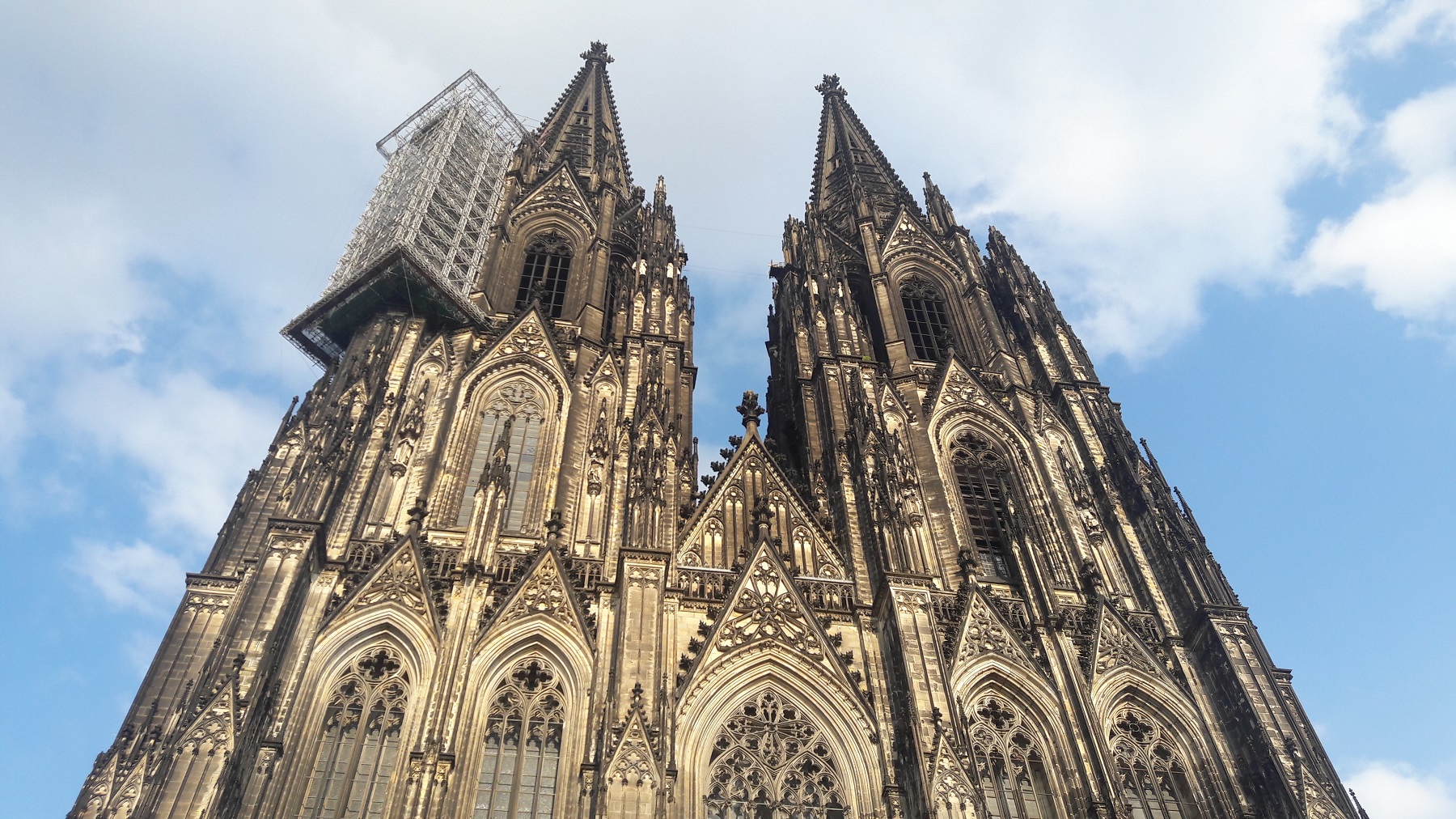
Cologne Cathedral is one of the world’s largest churches, the city’s landmark, place of pilgrimage, archbishopric of the Catholic Church and inscribed on the UNESCO World Heritage List. In the impressive church, the relics of the Biblical Magi are kept. The whole church is worth a visit and the interior and architecture are impressive.
This is an archeological museum where you can learn a lot about Cologne’s Roman past. There are many interesting things to see, and the museum itself is built where a Roman villa used to be.
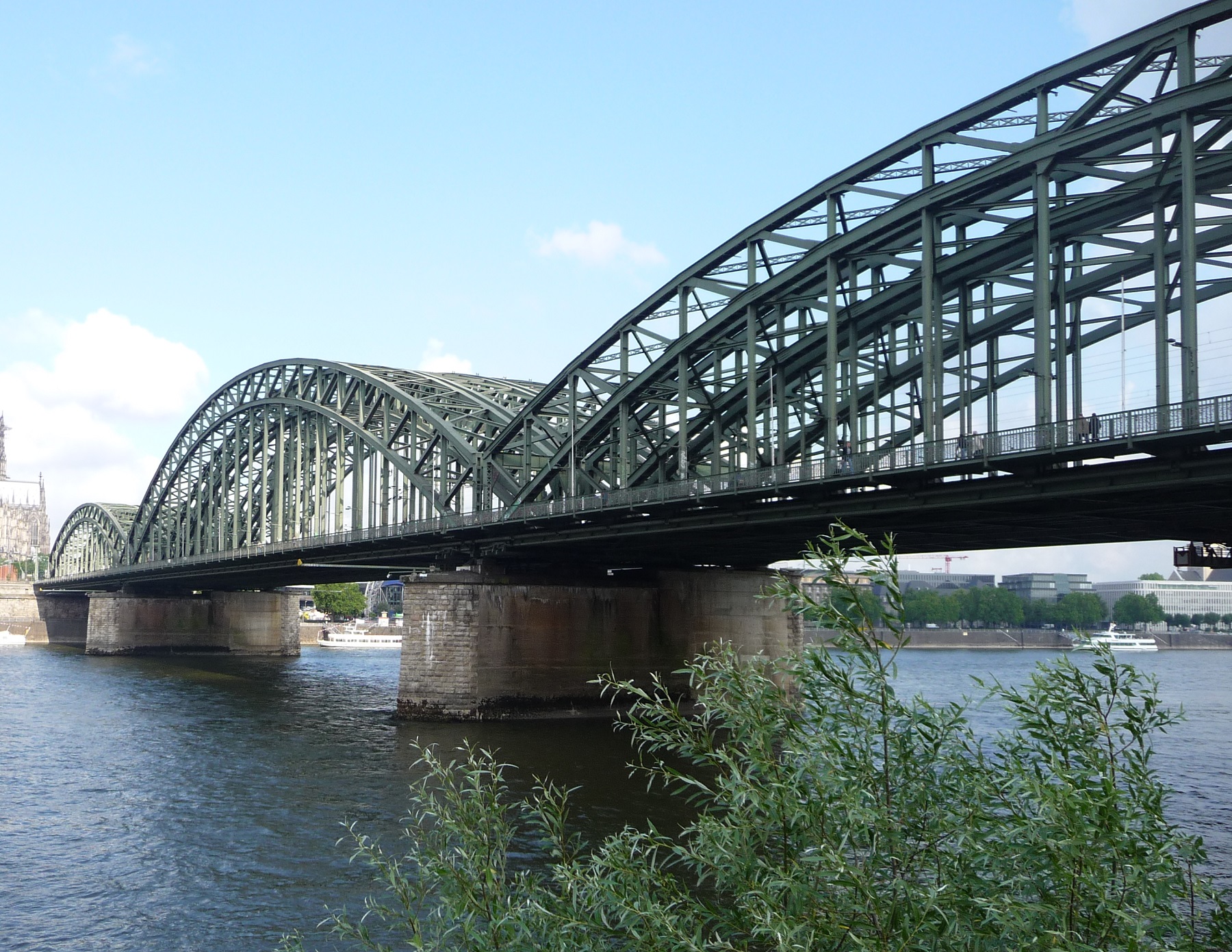
The Rhine flows through Cologne with the old town on the western shore. Of the many bridges over the river, the Hohenzollernbrücke is the most impressive with both the construction and the view from here. It is a railway bridge with pedestrian walkways along the sides.
The Wallraf-Richartz Museum is a fine art museum with collections from the Middle Ages to the 20th century. You can enjoy many beautiful works by i.a. Albrecht Dürer, Rembrandt and van Gogh in the large collection.
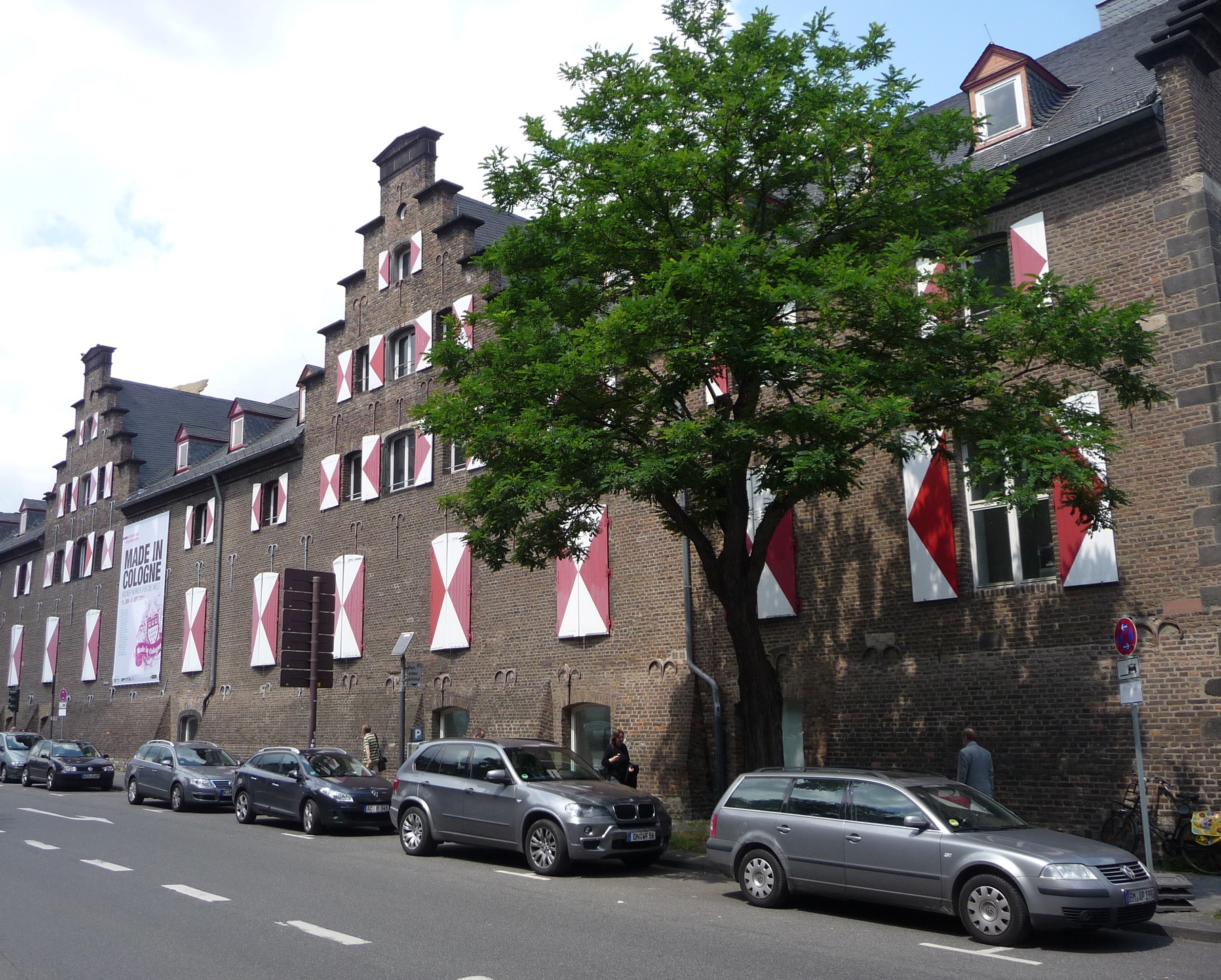
At this museum you can take an exciting journey through the interesting history of Cologne. Here are several different themes and the museum building is also interesting. It used to be the city’s arsenal.
Cologne is known for its many churches and Saint Gereon is one of the most beautiful in Romanesque architecture. It was built in 1151-1227, and today you can see a beautiful interior with several notable works of art.
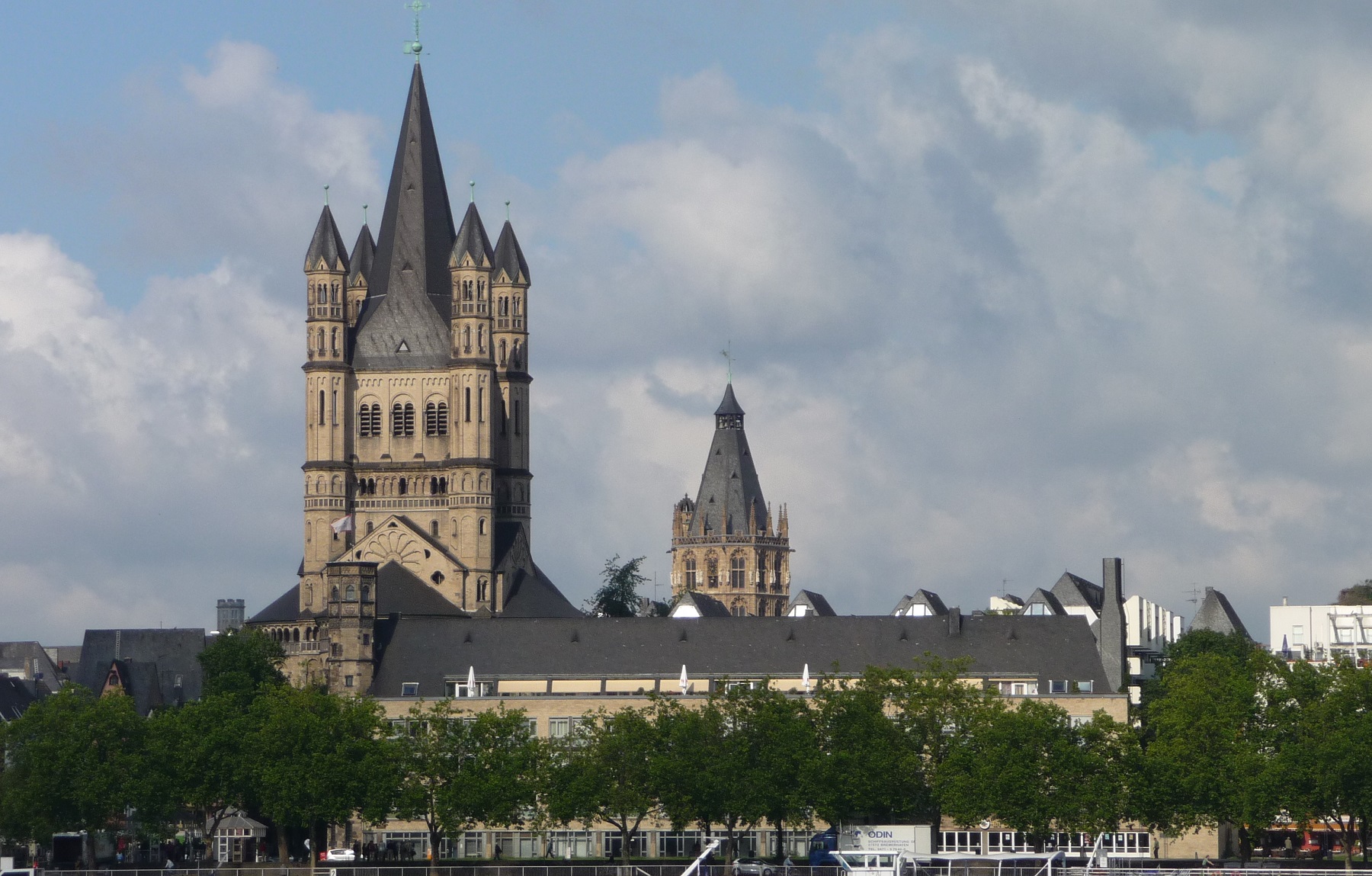
This is one of Cologne’s large Romanesque churches, and with its large tower it is a famous silhouette in the city skyline. The church is from the 13th century and dedicated to Saint Martin of Tours.
Museum Ludwig is an art museum with an exhibition of modern art. The museum’s collection consists of works from the year 1900 to today, and among the most famous parts is a large Picasso collection and various pop art.
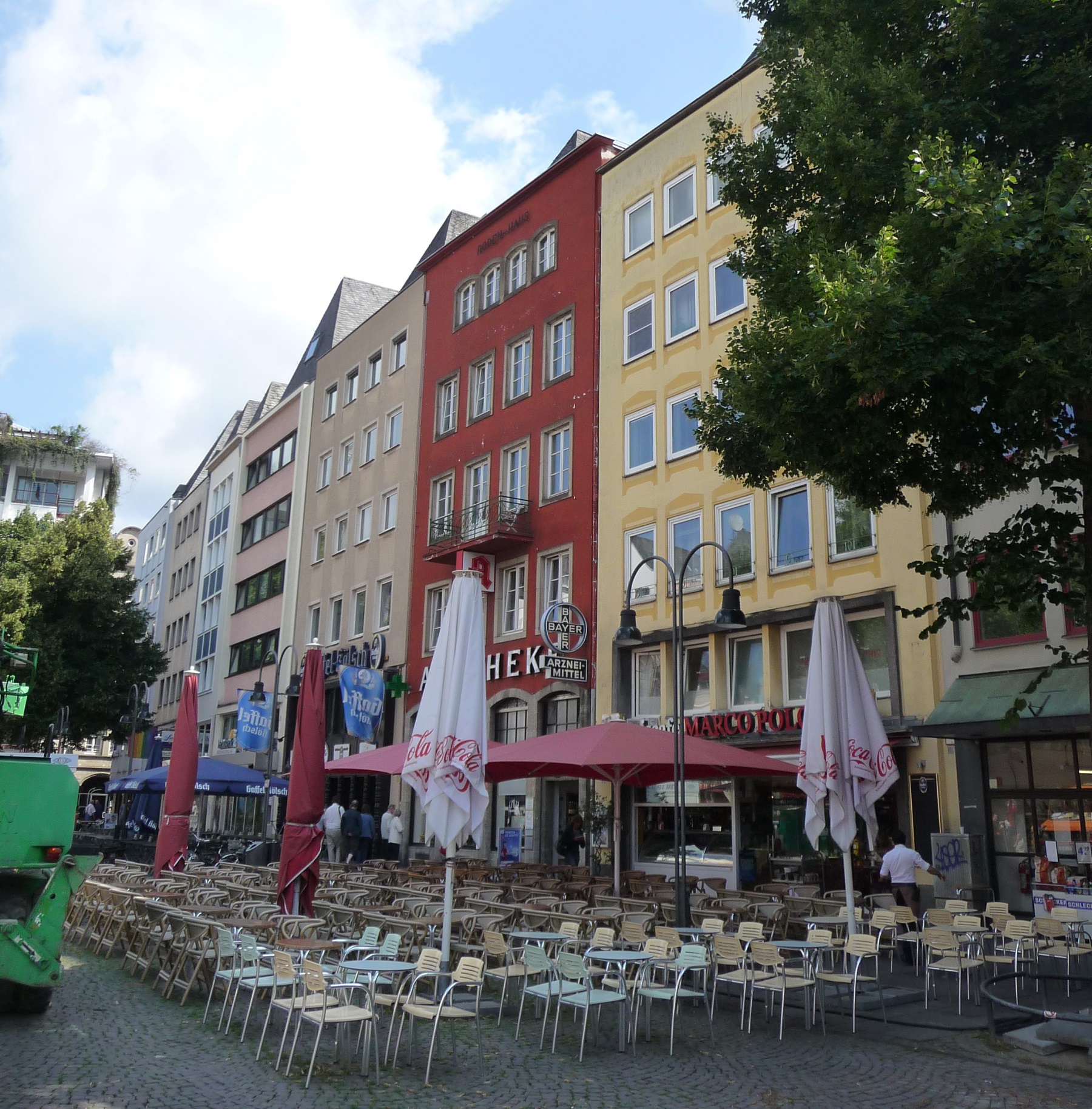
Alter Markt is one of the largest squares in Cologne’s Old Town. The architecture is characterized by many gabled houses that lie side by side here. The oldest of them is the Gaffel Haus, built in 1213.
Cologne City Hall consists of several buildings that have been built continuously since the 14th century. You can therefore see several building parts from different centuries; among them the 61 meter/200 foot high town hall tower from the beginning of the 15th century.
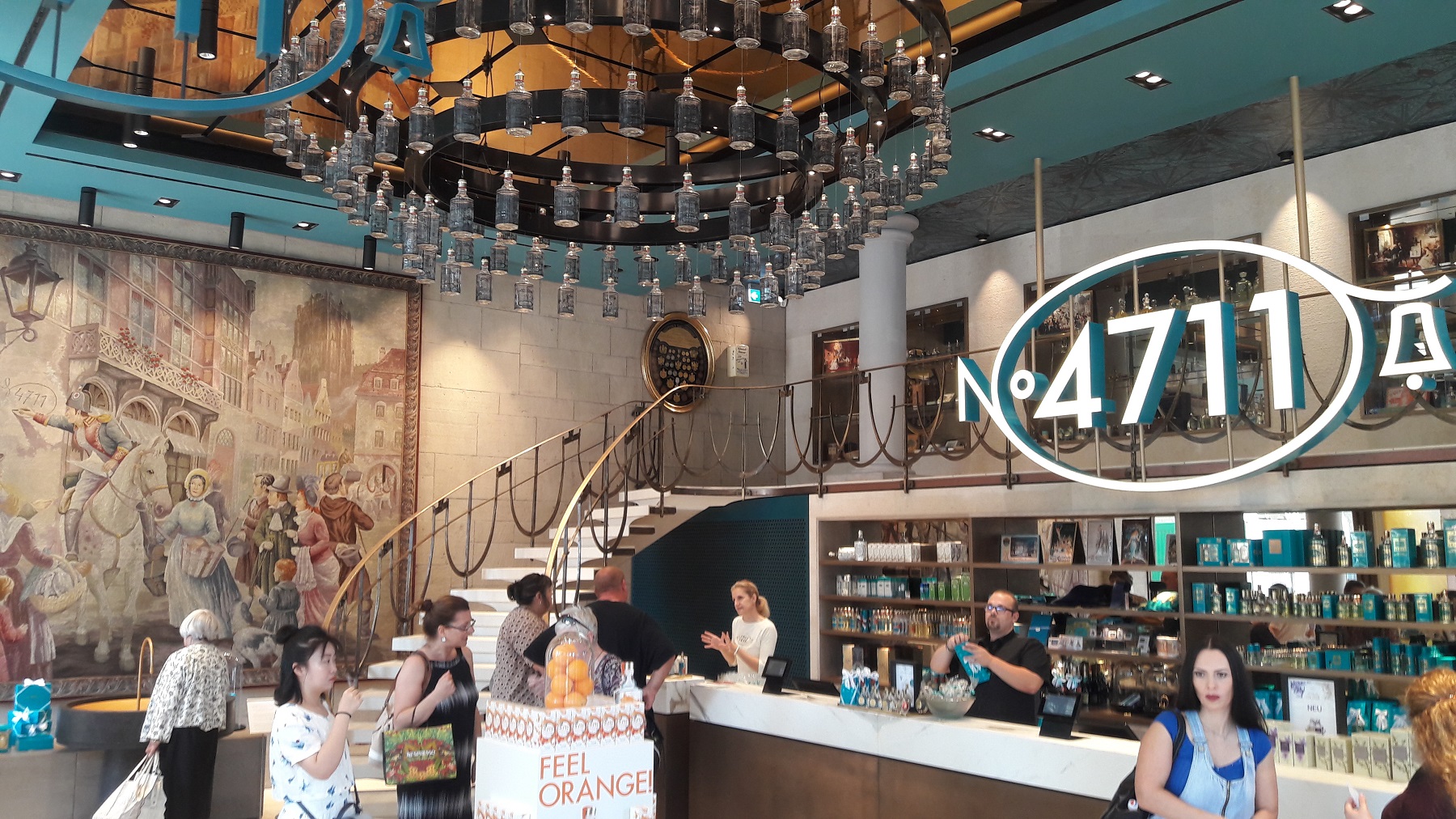
Haus 4711 is the home of the famous perfume house 4711, which produces eau de cologne with the same brand name. The 4711 name came from the French house numbering carried out in 1796 to get all residences listed as known addresses.
Water from Cologne bears the world-famous name eau de cologne, which is an extract of natural fragrances. It has been produced in Cologne since 1709, when Johann Maria Farina mixed the fragrance. You can learn more about that story at the Fragrance Museum.
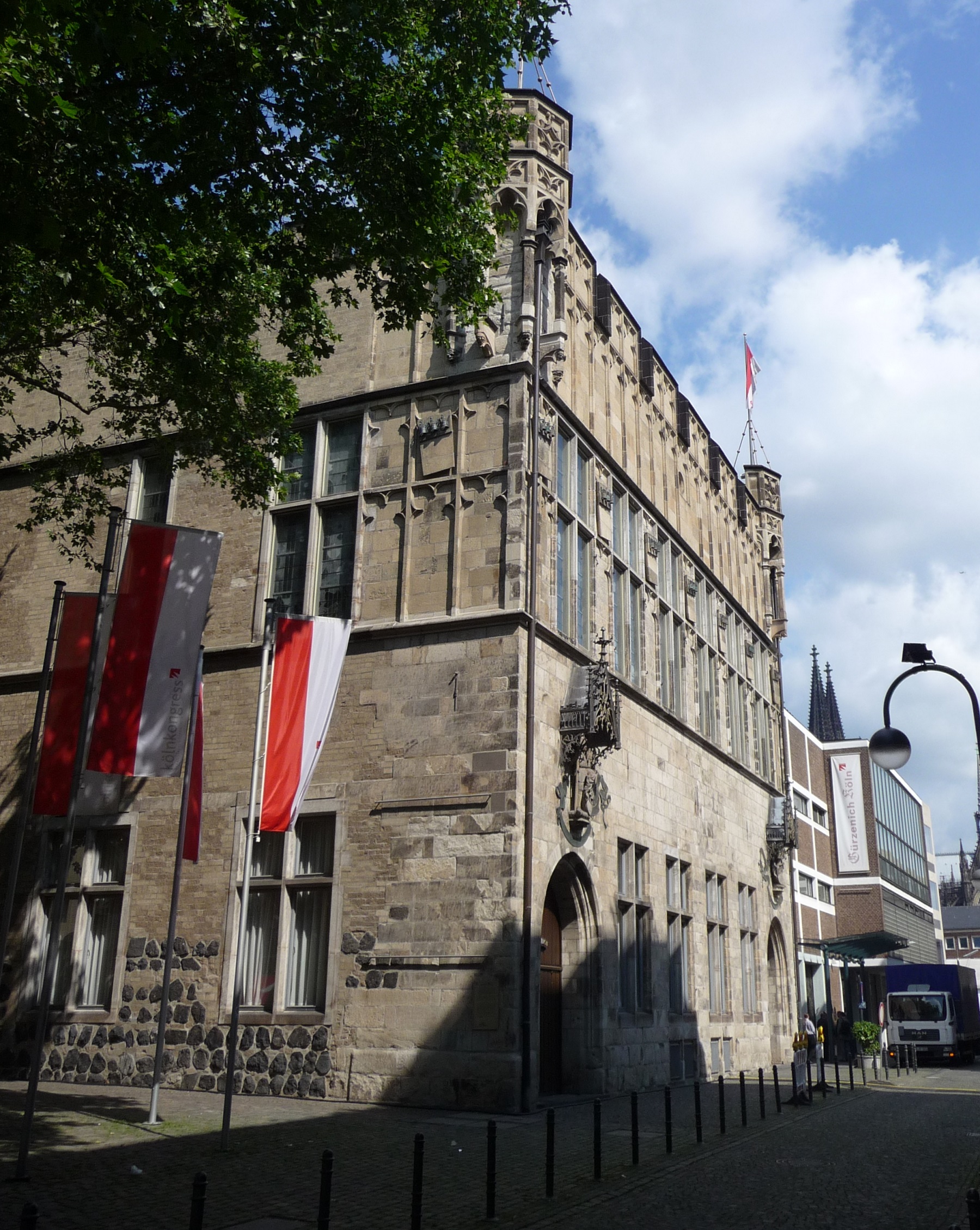
Gürzenich is a banquet hall building built 1441-1447 on the grounds of the von Gürzenich patrician family. Many things have happened here. This includes the holding of the Reichstag in 1505 and Karl Marx’s proclamation of the Communist Manifesto in 1849.
This church was originally consecrated in the 12th century and later both expanded and rebuilt. Today it stands as a ruin, a memorial to the world wars of the 20th century.
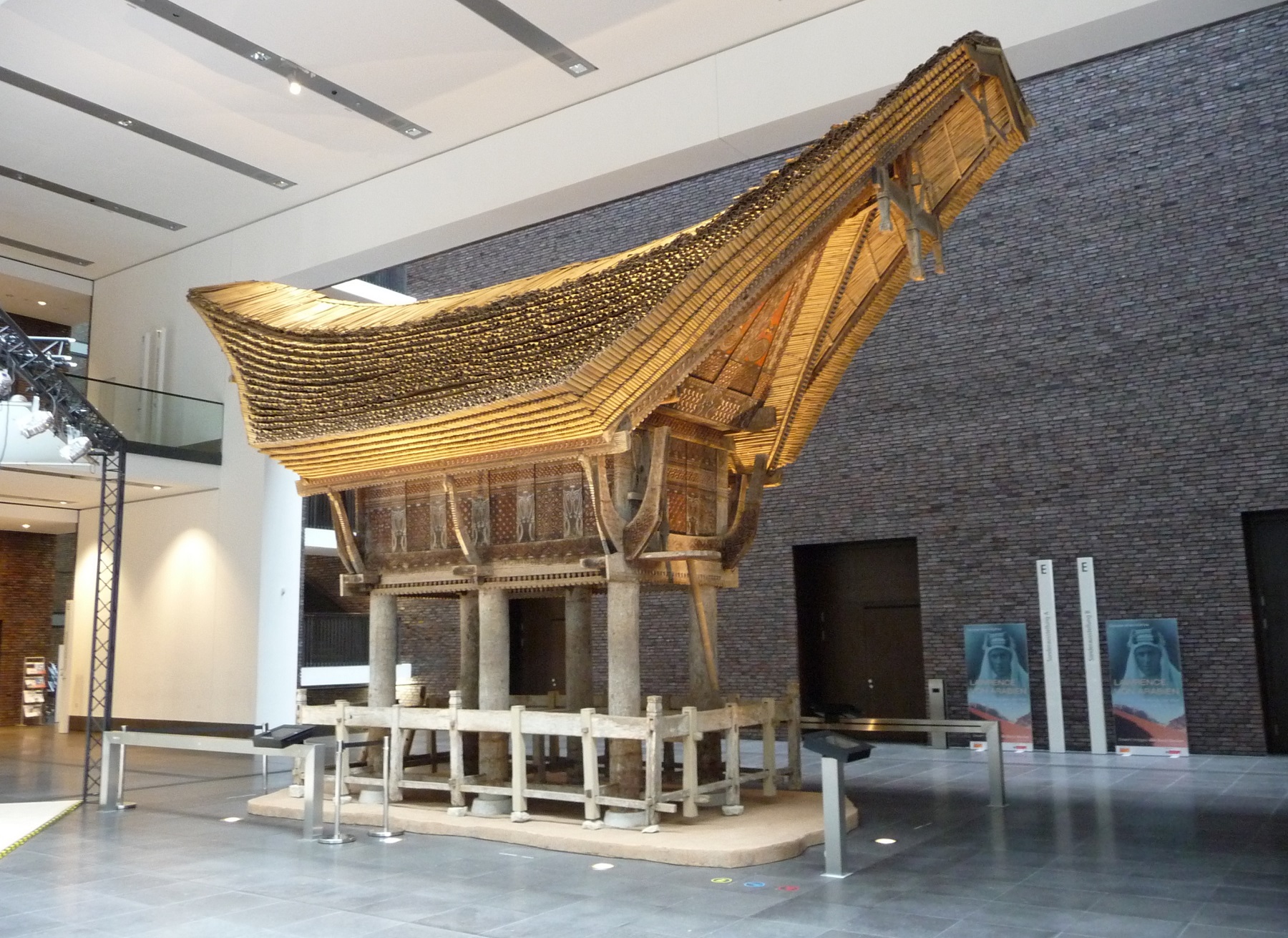
At this museum you can take an ethnological journey through the cultures of the world. The collections consist of tens of thousands of items from around the world; from Inuit cultures to the life and history of Polynesian peoples.
Antoniterkirche is a late Gothic church that in 1805 became Cologne’s first Protestant church. In the interior of the church you can see Ernst Barlach’s work, Der Schwebende, which was produced for Güstrow Cathedral.
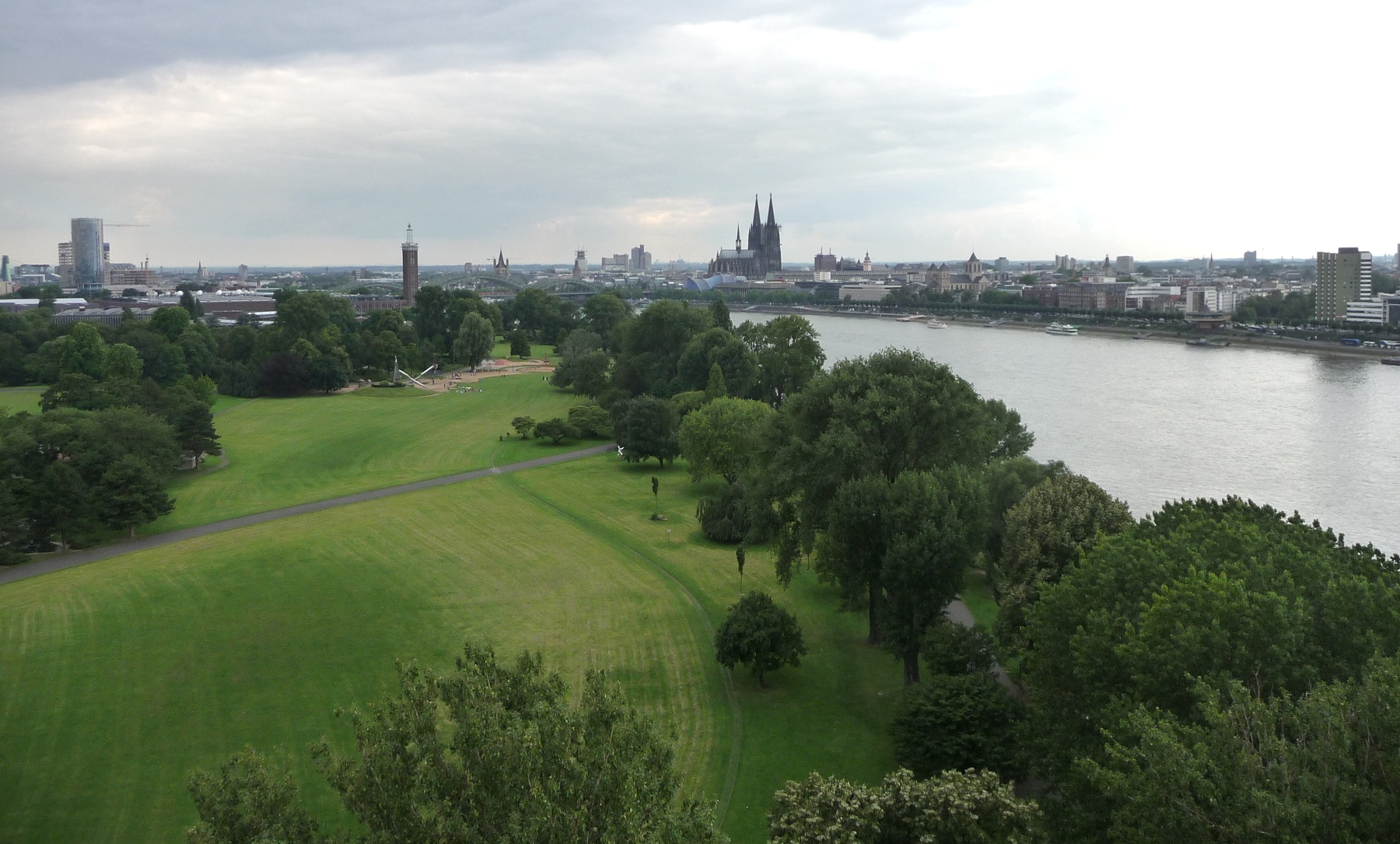
Rheinpark is a large green area along the eastern bank of the Rhine, which was transformed into a park from the beginning of the 20th century. One can i.a. run the Kleinbahn miniature railway and relax in the warm water of the Claudius-Therme thermal baths.
Ulrepforte is one of the four preserved, fortified city gates from Cologne’s medieval city wall. It was built in the early 13th century and inaugurated in 1245. The gate tower dates from the 15th century, when the gate was converted into a mill.
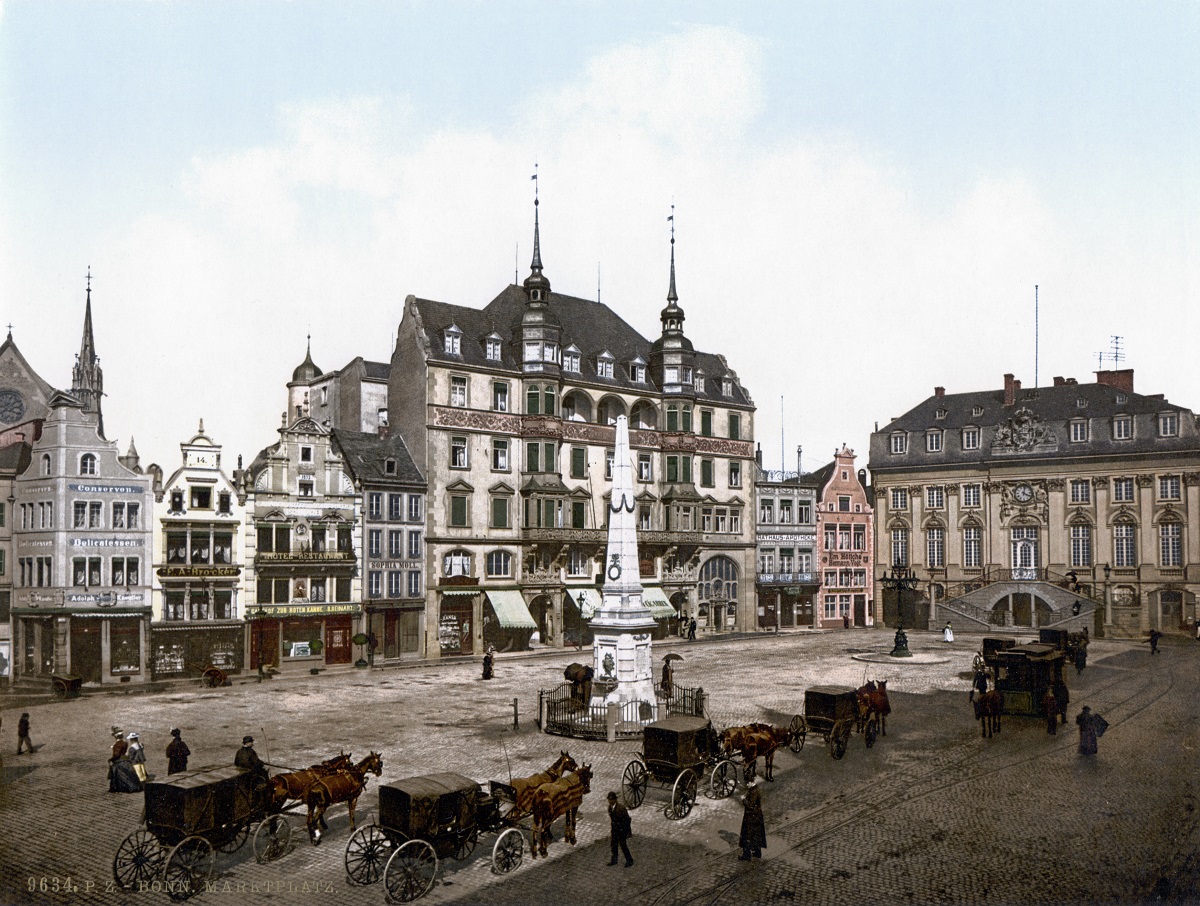
The city of Bonn is located on the Rhine south of Cologne. The relatively small town became world famous in 1949 when it was given the status of the capital of West Germany. Bonn is also known as Ludwig van Beethoven’s birthplace, and there is a monument to the composer on Münsterplatz, where the city’s beautiful and old cathedral is located. There are several other sights and exciting museums in the city. For example, you can visit a museum about the history of the Federal Republic of Germany.
Aachen is a German border town with a magnificent history and many sights. The city was Charles the Great’s favorite residence and coronation site for 31 Holy Roman emperors who became German kings here. The Cathedral of Aachen was built as the largest north of the Alps and is a UNESCO World Heritage Site. You can also see the 14th century town hall, city gates, the city’s thermal baths, etc.
Linz is a very nice little town along the Rhine. In the streets in the center you can see many of the half-timbered houses that the city is known for. Immediately north of Linz you can also see the remains of the bridge Ludendorff-Brücke, which became known from the Battle of Remagen in 1945.
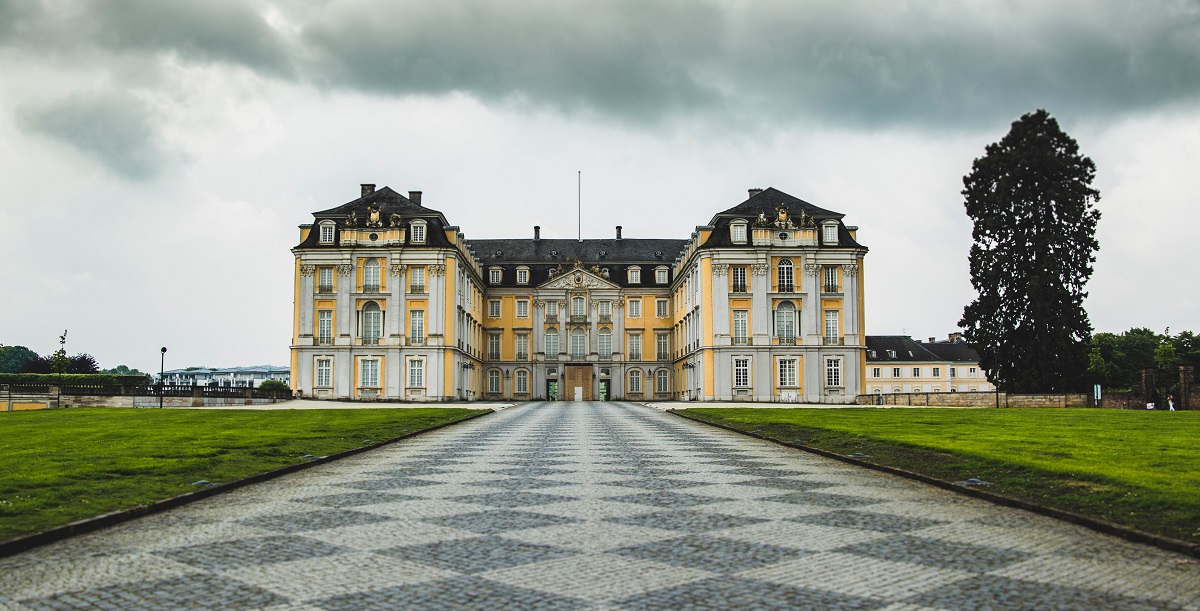
The city of Brühl is located close to Cologne and is a kind of suburb of the city on the Rhine. The highlights of the sights here are the castles Schloss Augustusburg and Falkenlust. Augustusburg is a UNESCO World Heritage Site and one of Germany’s finest baroque and rococo palaces. Falkenlust is a small hunting lodge that was built in the years 1729-1740 as a home for falconry.
Drachenburg Castle is a residence built in 1882-1884 in a distinguished architectural style with spires and towers as in the Middle Ages. A visit to the castle is a nice experience and you can get here with the cog railway Drachenfelsbahn, which runs from Königswinter via the castle to the heights Drachenfels.
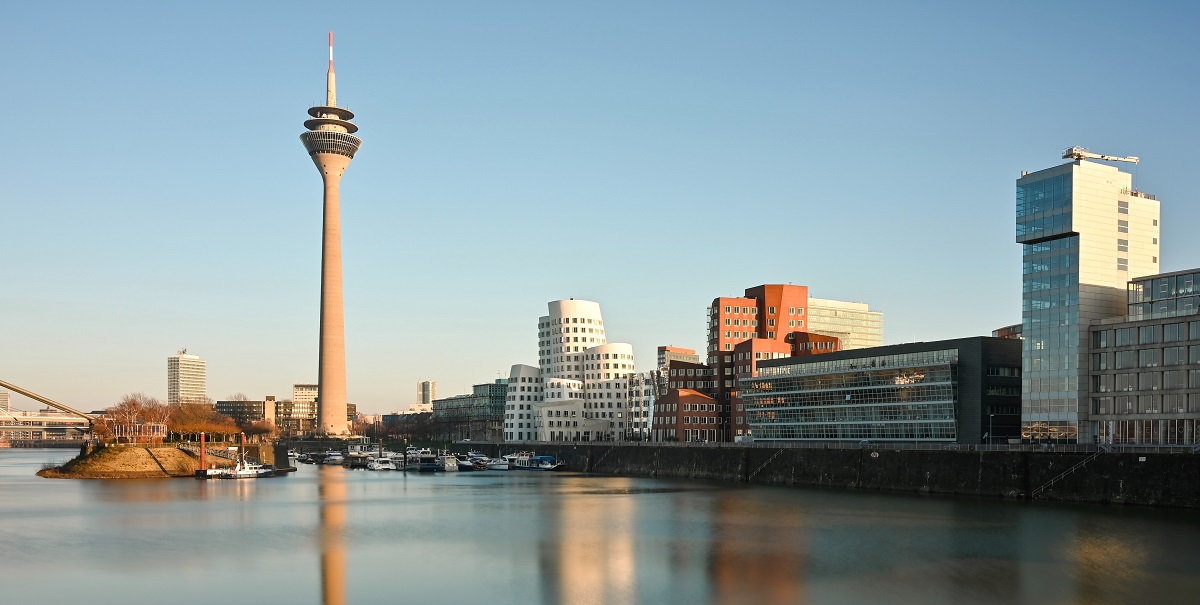
Düsseldorf is one of the largest cities in the state of North Rhine-Westphalia, and it offers a number of sights and a completely different architectural experience than in Cologne. The 234 meter/767 foot high Rheinturm dominates the modern skyline, which is also interesting in the areas along the Rhine. By the town you can also see the castle Schloss Benrath with its lovely garden.
Leonhard-Tietz-Straße 1
galeria-kaufhof.de
Breite Straße 103-135
karstadt.de
Kalker Hauptstraße 55
koeln-arcaden.de
Neumarkt
neumarkt-galerie.de
Neumarkt 18-24
neumarktpassage.de
Breite Straße 40
opern-passagen.de
Aachener Straße 1253
rhein-center-koeln.de
Schildergasse, Hohe Straße, Breite Straße, Ehrenstraße, Mittelstraße, Pfeilstraße, Eigelstein.
Claudius-Therme
Sachsenbergstraße 1
claudius-therme.de
Kölner Seilbahn
Riehler Straße 180, Sachsenbergstraße, Auenweg
koelner-seilbahn.de
Kölner Zoo
Riehler Straße 173
koelnerzoo.de
Odysseum
Corintostraße 1
odysseum.de
Phantasialand
Berggeiststraße 31-41, Brühl
phantasialand.de
Sea Life
Rheinallee 8, Königswinter
sealifeeurope.com
Straßenbahn-Museum
Gemarkenstraße 173
hsk-koeln.de
Cologne’s urban history goes back to the time when Roman troops came to the territory of the Ubii people and settled on the west bank of the Rhine in the year 39 BC. The place was called Oppidum Ubiorum and was an important military outpost in the extreme Roman Empire to the northeast. In year 17, Rome abandoned the plans to conquer the Germanic areas east of the Rhine, and instead the border area west of the river had to be strengthened.
In the year 50, the status of Oppidum Ubiorum was increased when Emperor Claudius’ wife, Agrippina, wanted to see his birthplace elevated to colonia; a city under Roman law. The town was now called Colonia Claudia Ara Agrippinensis; named after both Claudius and Agrippina. The short name was Colonia Agrippina, and soon after its founding as colonia, new plants and institutions were established.
In the year 80, water supply was established. With the total 135 kilometer long Eifel aqueduct, water was led to the city from the Eifel Mountains to the southwest. In the year 90, Colonia Agrippina became the capital of the Roman province of Germania Inferior, and at that time 45,000 people lived here.
At the end of the century AD started the construction of a city wall with 9 gates and 19 towers. The 8-meter-high wall was completed in the 200’s, with the city’s population dwindling to about 15,000 in the city itself and another 5,000 in the area. However, the city remained significant, and in 260, Emperor Postumus made Colonia Agrippina the capital of the Gallic Empire, Imperium Galliarum. The kingdom consisted of 274 and included Roman territories in present Germany, England, France and Benelux.
In 310, Emperor Constantine I built a bridge over the Rhine, and on the eastern bank the Castellum Divitia castle was built as a protection; Divitia is today’s Deutz.
Christianity entered the 300th century, with Maternus in the year 313 counted as the city’s first bishop. Written sources first mention a church in 355.
Through the 300-400s, Colonia Agrippina was repeatedly besieged and attacked by the Franks. In 455 the Roman city fell and the Franks made it the capital. By this time, the Germanic Franks had continued to be divided into several tribes. In Cologne, they used the Roman infrastructure, city walls and buildings such as Prairie, which became a Franconian royal residence.
The centuries waged numerous power struggles between the king and his family as well as other influential people in the city about the area. Cologne’s status as a royal city ended in 755, when the Merovingian rulers had to relinquish power.
In the time of the Saxon Wars in the years 772-804, the importance of Cologne increased again. The political and cultural influence was not least driven by the city’s bishops and the church, which gathered relics and erected many churches for martyrs.
In 795, Cologne became archbishopric with Hildebold as the first archbishop; he had been ordained bishop of the city by Karl the Great in 787. In 873, one of the following in office, Willibert, was able to consecrate the cathedral which was the precursor to the present Cologne Dom.
In France there were internal strife which weakened the external defense. Cologne had also been under various control when the Vikings plundered Cologne in the beginning of the 880s and almost completely destroyed it. Before the ravages of the Vikings, some of the church’s people had moved the main treasures to Mainz, where they were safe. A great deal of reconstruction work was underway; among other things by the city wall. It was only 891 before relics were again transferred to the city.
In 925, Cologne’s affiliation in France was established. It happened after the Saxon Heinrich I’s victories for the Eastern Franc, which included the Lorraine and thus Cologne. Heinrich was king of the kingdom, predecessor of the German-Roman Empire and later and present Germany.
In the mid-900s, Emperor Otto I made Cologne’s archbishop the Duke of Lorraine and thus also the real leader of the city. The title involved trade rights, and the appointment was thus the starting point for Cologne’s centuries under the power of the church.
From the first reigning archbishop, Brun, many new buildings were started in Cologne; many churches were founded and new neighborhoods were generally built. New cultural inspiration came from Theophanu, who, as the daughter of the East Roman Emperor in Constantinople, married Emperor Otto II. Both Brun and Theophanu were buried at the Cologne Church of St. Pantaleon upon their death.
Cologne’s regional importance increased further when the archbishops of 1039 began issuing the coins Kölner Mark, which became the leading coin base in this part of the Rhine region. Politically, the city also developed, and in 1135 the city’s first town hall was inaugurated.
This was particularly important when Archbishop Rainald von Dassel brought the relics of Holy Kings to the city on July 23, 1164. The relics made Cologne one of the most important pilgrimage destinations of the Christian Church in Europe, and they were the cause of Cologne’s great cathedral and thus the present status of a major tourist destination.
In the decades around 1200, the archbishops commissioned one of Europe’s greatest fortifications; Cologne’s medieval city wall that was significantly larger than the Roman one. There were 12 city gates and 52 towers in the wall around the city.
In 1254, Cologne joined an alliance of 59 cities in the Rhine area. The union was formed in response to the precarious status of the German-Roman regime that had been in the interregnum. The primary focus was the elimination of the myriad of customs that made trade difficult. In order to strengthen Cologne’s position as a trading center, the archbishops introduced the so-called Stapelrecht, with which passing goods were to be offered for sale in the markets in Cologne.
June 5, 1288 became the day on which church rule in Cologne was overthrown. With the Battle of Worringen between Archbishop Siegfried von Westerburg and Duke Johann I of Brabant, the citizens of Cologne participated on the side of the victorious duke, and the city became de facto a free state city directly under the German-Roman emperor; although this status only became official in 1475.
In 1396, Cologne’s new constitution was passed, the Verbundbrief, which introduced a council of councilors. Around 1400, Cologne was the largest city in the German-Roman Empire, and in 1401 Ruprecht was crowned German King by the city’s Archbishop Friedrich III. Trade also flourished, and Cologne was a member of the Hanseatic League.
The 16th century was a time when the civil uprising in 1512-1513 resulted in more rights to the population. There was opposition to Martin Luther’s words that led to the Reformation, and in 1560 the great and long-standing construction work at Kölner Dom was stopped for financial reasons. It took more than 300 years for the church to be completed. In 1560, however, a great deal of construction work was also started; The Rhine stepped on the eastern shore, and it was thought the danger of breakthrough was great. In order to preserve the river’s flow, substantial reinforcements were built over the following centuries.
In 1709 Giovanni Battista Farina founded the oldest, present perfume factory in the world, and here he produced some of what has put Cologne’s name on the world map, the cologne water / eau de Cologne. In 1716 the perfume also became an export commodity and over time a number of manufacturers sought to copy the success.
In 1794, Cologne was conquered by the French Revolutionary Army, and the former councilor’s government was halted. The French, after the example of the home country, established a municipal administration. The French government conducted the year after a numbering of the town houses, and house number 4711 later gave the name to one of the city’s well-known brands of cooling water.
In the late 18th century, the city’s monasteries were demolished, and the Concordate in 1801 between Napoleon and the Catholic Church, Cologne was demolished as the archdiocese. This status gained Aachen instead, and with the concordat ended the French struggle against the church in Rome.
The citizens of Cologne became all French nationals in the early 19th century, when Napoleon also visited the city. It was in 1804, when, on September 13, he was received with cannonades and ringing church bells; he rode through the gate of Eigelstein to Neumarkt.
On January 14, 1814, the French troops left Cologne in favor of advancing Prussian forces, and with the Vienna Congress in 1815, Prussia gained a larger territory in the Rhineland; including Cologne, which, however, retained French currency until 1848.
The original drawings for the facade of the incomplete cathedral were found, and the desire for completion of the mighty building became a matter as a symbol of a German national movement. With popular gathering and support from the Prussian King Friedrich Wilhelm IV, construction could be resumed in 1842 after a standstill since 1560. Until 1868, a 1300-century crane could still be seen at the top of the church; this year the church’s interior was finished and the impressed facade was started. The church was completed in 1880.
Throughout the 19th century, the infrastructure in and around the city was significantly expanded and utilized. The English steamship Defiance reached Cologne as the first of its kind in 1816, and overall transport increased along the Rhine, and from 1839 the railroad also traveled from Cologne to more and more cities. 1855-1859 Dombrücke was built as the first bridge in Cologne across the Rhine since Roman times. With the completion of the bridge, a new railway station was inaugurated and the trains now ran across the river.
In the last decades of the 19th century, the medieval city wall was demolished and the city needed space to grow. The city wall was replaced by an outer fortress ring that could protect the rapidly growing number of inhabitants. From 73,000 citizens in 1837, the city grew to 640,000 in 1913. After World War I, the city’s defense was looped in accordance with the Treaty of Versailles.
In the 1920s there was again growth in the city. The Hansa High House was built from 1924 to 1925 and was at the opening Europe’s tallest office building. The same year, the Kaufhaus Tietz department store started Germany’s first escalator. The city bought a former military airfield northwest of the city center, and after opening as an airport, it quickly became one of Germany’s largest.
In 1929, American Ford laid the foundation stone for a car factory in the city, providing additional economic sustenance to the city, whose cultural scene also flourished these years; not least musically.
On January 4, 1933, Adolf Hitler and Franz von Papen met at the address Stadtwaldgürtel 35. Von Papen had been chancellor through 1932 and at that time replaced by the last chancellor of the Weimar Republic, Kurt von Schleicher. At the meeting, it was agreed that Adolf Hitler should be the future Chancellor of the Kingdom rather than von Papen.
In 1936, German troops returned to the demilitarized Rhineland. During World War II, large parts of Cologne were destroyed. The first aerial bombardment took place on May 12, 1940, and after a total of 262 air strikes, 95% of the Old Town was in ruins. The Rhine bridges were destroyed, while Cologne’s cathedral stood almost undamaged in the ruin cluster.
On March 9, 1945, the US military government established itself in Cologne, and on May 4 of that year, the later Chancellor, Konrad Adenauer, resumed his former office as mayor of the city. Adenauer had held the title from 1917-1933 and this time occupied the post a transition before Hermann Pünder was appointed in November 1945.
In 1946, the first local elections were held and Cologne came to the Federal Republic of Germany to belong to the state of North Rhine-Westphalia. Traffic began to run across the rebuilt Hohenzollern bridge in 1948, and the years following sprouted initiative, exhibitions and other activity in Cologne.
During the German Wirtschaftswunder, the country’s economy flourished in the following decades, and prominent guests visited the city. In 1962, it was President of France Charles de Gaulle, and the following year, US President John F. Kennedy came to visit. Churchly, Pope John Paul II came to Cologne in both 1980 and 1987.
Culturally, since the end of World War II, there has also been much development. In 1957, the city’s new opera house opened, and the following decades followed several major museum openings; among others the Roman-Germanic Museum in 1974 and the Museum Ludwig in 1986.
Today, Cologne is Germany’s fourth largest city with a wealth of trade shows and exhibitions. The city’s location and the many offers to tourists with the cathedral as the absolute landmark also attract lots of tourists to the beautiful Rhinby.
Overview of Cologne
When you say Cologne, most people think of the majestic cathedral, which is one of the world’s largest churches, and which since the foundation of the church has been a pilgrimage church because of the relics of the Biblical Magi. The church continues to throne over the city as one of both Germany and Europe’s major buildings, and a visit to the church is worth the whole trip to Cologne.
Cologne has so much else to offer besides the cathedral. With the status of Roman colony, there was an early city here, and relics from that time are still to be seen in many places in the city and in museums. Today the Roman monuments blend with Cologne’s numerous large churches, mainly dating to the Romanesque period, the medieval city gates, cozy squares and modern Cologne.
About the upcoming Cologne travel guide
About the travel guide
The Cologne travel guide gives you an overview of the sights and activities of the German city. Read about top sights and other sights, and get a tour guide with tour suggestions and detailed descriptions of all the city’s most important churches, monuments, mansions, museums, etc.
Cologne is waiting for you, and at vamados.com you can also find cheap flights and great deals on hotels for your trip. You just select your travel dates and then you get flight and accommodation suggestions in and around the city.
Read more about Cologne and Germany
Buy the travel guide
Click the “Add to Cart” button to purchase the travel guide. After that you will come to the payment, where you enter the purchase and payment information. Upon payment of the travel guide, you will immediately receive a receipt with a link to download your purchase. You can download the travel guide immediately or use the download link in the email later.
Use the travel guide
When you buy the travel guide to Cologne you get the book online so you can have it on your phone, tablet or computer – and of course you can choose to print it. Use the maps and tour suggestions and you will have a good and content-rich journey.
Cathedral • Hohenzollern Bridge • Kölsch • Rhine • Eau de Cologne
Overview of Cologne
When you say Cologne, most people think of the majestic cathedral, which is one of the world’s largest churches, and which since the foundation of the church has been a pilgrimage church because of the relics of the Biblical Magi. The church continues to throne over the city as one of both Germany and Europe’s major buildings, and a visit to the church is worth the whole trip to Cologne.
Cologne has so much else to offer besides the cathedral. With the status of Roman colony, there was an early city here, and relics from that time are still to be seen in many places in the city and in museums. Today the Roman monuments blend with Cologne’s numerous large churches, mainly dating to the Romanesque period, the medieval city gates, cozy squares and modern Cologne.
About the upcoming Cologne travel guide
About the travel guide
The Cologne travel guide gives you an overview of the sights and activities of the German city. Read about top sights and other sights, and get a tour guide with tour suggestions and detailed descriptions of all the city’s most important churches, monuments, mansions, museums, etc.
Cologne is waiting for you, and at vamados.com you can also find cheap flights and great deals on hotels for your trip. You just select your travel dates and then you get flight and accommodation suggestions in and around the city.
Read more about Cologne and Germany
Buy the travel guide
Click the “Add to Cart” button to purchase the travel guide. After that you will come to the payment, where you enter the purchase and payment information. Upon payment of the travel guide, you will immediately receive a receipt with a link to download your purchase. You can download the travel guide immediately or use the download link in the email later.
Use the travel guide
When you buy the travel guide to Cologne you get the book online so you can have it on your phone, tablet or computer – and of course you can choose to print it. Use the maps and tour suggestions and you will have a good and content-rich journey.

This is one of Cologne’s large Romanesque churches, and with its large tower it is a famous silhouette in the city skyline. The church is from the 13th century and dedicated to Saint Martin of Tours.
Museum Ludwig is an art museum with an exhibition of modern art. The museum’s collection consists of works from the year 1900 to today, and among the most famous parts is a large Picasso collection and various pop art.

Alter Markt is one of the largest squares in Cologne’s Old Town. The architecture is characterized by many gabled houses that lie side by side here. The oldest of them is the Gaffel Haus, built in 1213.
Cologne City Hall consists of several buildings that have been built continuously since the 14th century. You can therefore see several building parts from different centuries; among them the 61 meter/200 foot high town hall tower from the beginning of the 15th century.

Haus 4711 is the home of the famous perfume house 4711, which produces eau de cologne with the same brand name. The 4711 name came from the French house numbering carried out in 1796 to get all residences listed as known addresses.
Water from Cologne bears the world-famous name eau de cologne, which is an extract of natural fragrances. It has been produced in Cologne since 1709, when Johann Maria Farina mixed the fragrance. You can learn more about that story at the Fragrance Museum.

Gürzenich is a banquet hall building built 1441-1447 on the grounds of the von Gürzenich patrician family. Many things have happened here. This includes the holding of the Reichstag in 1505 and Karl Marx’s proclamation of the Communist Manifesto in 1849.
This church was originally consecrated in the 12th century and later both expanded and rebuilt. Today it stands as a ruin, a memorial to the world wars of the 20th century.

At this museum you can take an ethnological journey through the cultures of the world. The collections consist of tens of thousands of items from around the world; from Inuit cultures to the life and history of Polynesian peoples.
Antoniterkirche is a late Gothic church that in 1805 became Cologne’s first Protestant church. In the interior of the church you can see Ernst Barlach’s work, Der Schwebende, which was produced for Güstrow Cathedral.

Rheinpark is a large green area along the eastern bank of the Rhine, which was transformed into a park from the beginning of the 20th century. One can i.a. run the Kleinbahn miniature railway and relax in the warm water of the Claudius-Therme thermal baths.
Ulrepforte is one of the four preserved, fortified city gates from Cologne’s medieval city wall. It was built in the early 13th century and inaugurated in 1245. The gate tower dates from the 15th century, when the gate was converted into a mill.
Similar to Cologne Travel Guide